The Hot-Spring Town
Matsukawa Onsen is a hot-spring town located near its namesake river within the Towada-Hachimantai National Park. Three inns operate here, their baths fed by Hachimantai’s sulfurous milky-white waters. Just upstream stands the Matsukawa Geothermal Power Station, the first geothermal power plant to launch commercial operations in Japan.
Soothing Soaks
The spring season at Matsukawa Onsen begins in April once the two scenic highland routes, the 17-kilometer Hachimantai Jukai Line and the 27-kilometer Hachimantai Aspite Line, are cleared of the long months of heavy snow. A drive through these famous snow corridors with their towering white walls of plowed snow leads to mountain valleys where sprouting plants and the calls of bush warblers announce spring’s arrival. Summer brings the spreading green canopies of oak and beech leaves and the fun of watching fireflies at night. Fall, of course, is all about the trees’ brilliant tapestry of reds and golds. And soaking in a steamy hot-spring bath in the quiet hush of winter with snow all around is surely one of the best Zen moments to be experienced in all of Japan. The restorative hot springs here are welcome respite for hikers and skiers, too. Three trailheads are located at Matsukawa Onsen. One leads to Mount Iwate via Ubakurayama. Another goes directly to Mitsuishi after passing the Mitsuishi Lodge. A third takes a circular route, with jaw-dropping views of Mount Iwate from the peaks of Gentagatake, Ofuka, and Mitsuishi before heading back to Matsukawa Onsen.
Three lodgings in the Matsukawa Onsen area welcome visitors for day use as well as overnight stays. The milky-white waters in this volcanic zone come from sulfur springs. They have the typical mineral deposits known as yubana and the characteristic scent reminiscent of boiled eggs. It is no surprise, either, that fresh eggs boiled for you courtesy of Gaia herself are on the snack menus. Called onsen tamago, these eggs cooked with geothermal energies are a popular treat and souvenir found in hot springs throughout Japan. You can bring home the yubana minerals, too, and recreate some of the authentic hot-spring experience right in your own bath.
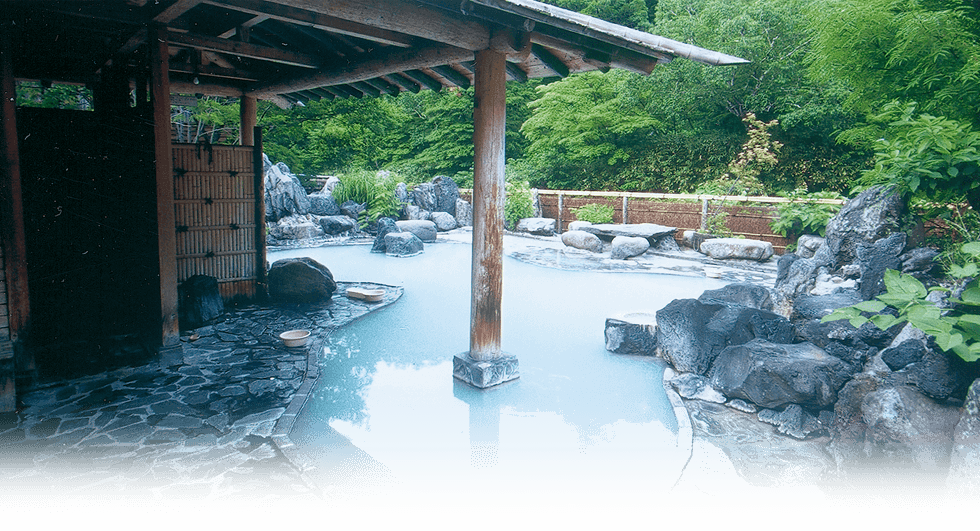
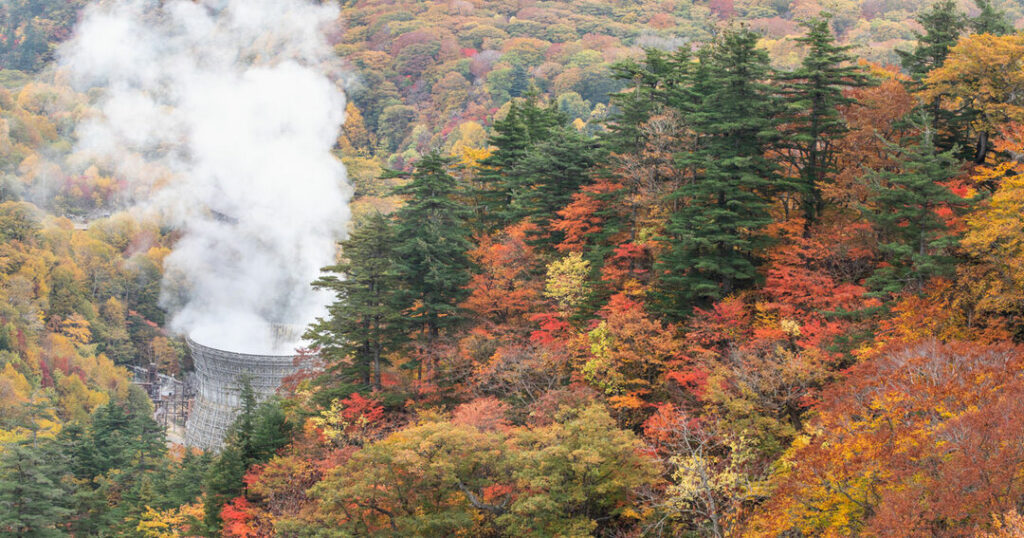
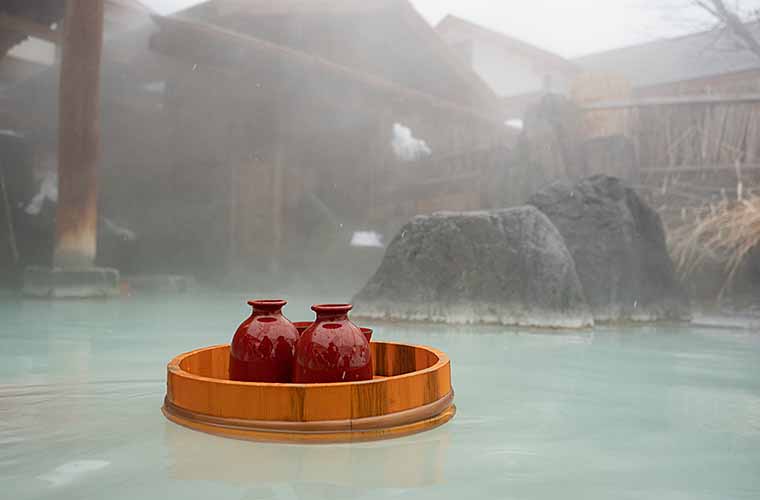
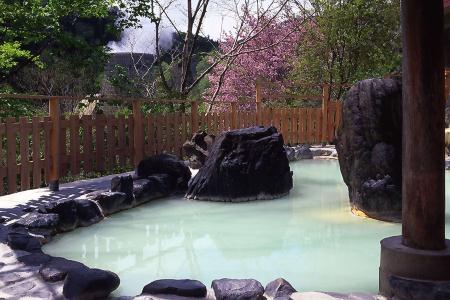
Geocolor Art
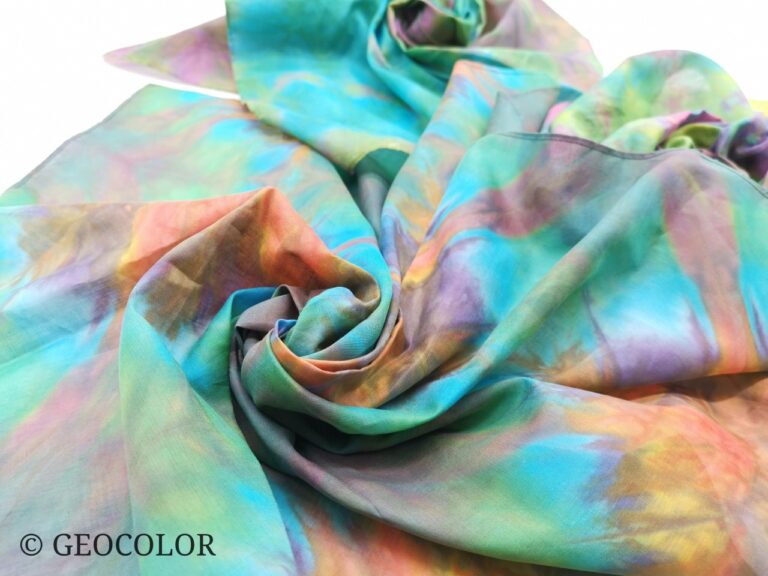
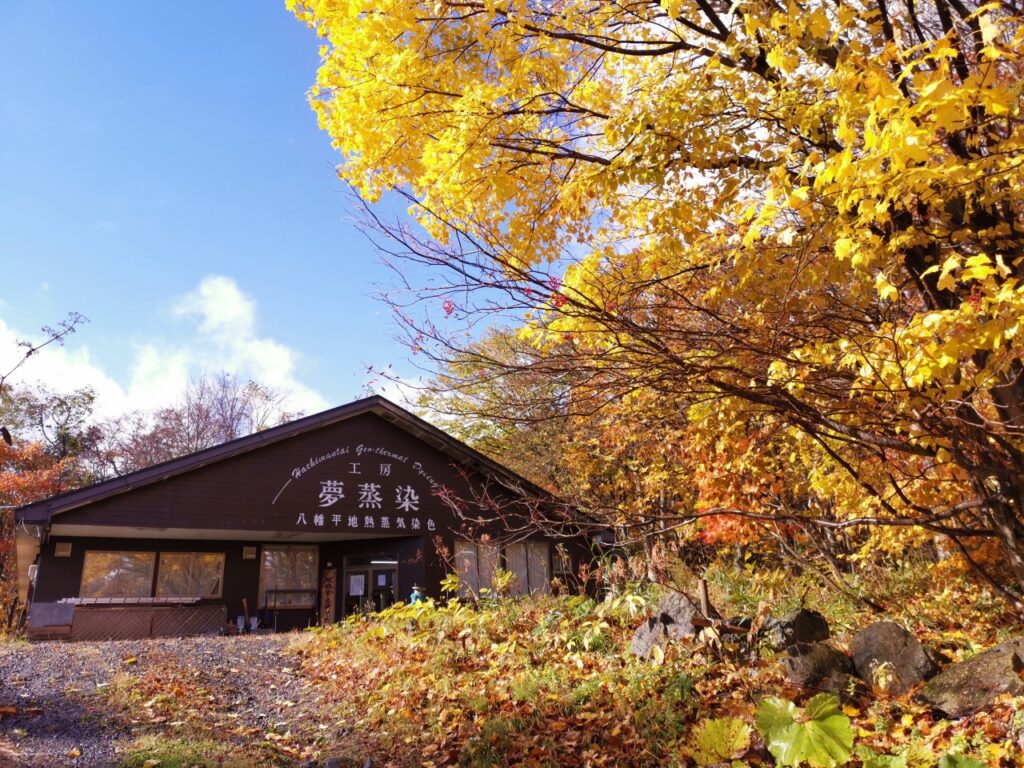
Brilliantly colored scarves, furoshiki wrapping cloths, handkerchiefs, handbags, and even dresses by the textile artisans of Geocolor are another unique souvenir of a stay in Matsukawa. The pigments are set with pure hydrogen-sulfide steam piped directly into the studio from the earth below, yielding designs with softly gradated greens, blues, pinks, purples, and gold. These one-of-a-kind works recall nature’s own rich spectrum found in the forests, wetlands, alpine highlands, valleys, and hot springs of Hachimantai.
Visitors can enjoy hot outdoor baths right on the Matsukawa River and even spend a day hopping from one lodging’s baths to the next. The pleasing sounds of a rushing mountain stream and the meditative effect of wind rustling through trees enhance relaxation. The sterilizing capacity of these sulfur springs aids the healing of skin ailments, while the chemical properties of sulfuric waters help to improve circulation. Moreover, sulfur springs are commonly known to improve bronchitis and neuralgia. After a soak, siphon-brewed coffee or a tall glass of craft beer brewed with beech-tree yeast await. The meals served for overnight lodgers incorporate plenty of locally grown produce, including wild sansai plants, always a treat when visiting rural inns.
Find out more about Matsukawa Onsen at visitiwate.com.
See the Japan Association of Secluded Hot Spring Inns at hitou.or.jp.
Visit the Geocolor dyeing studio at geo-color.com.

